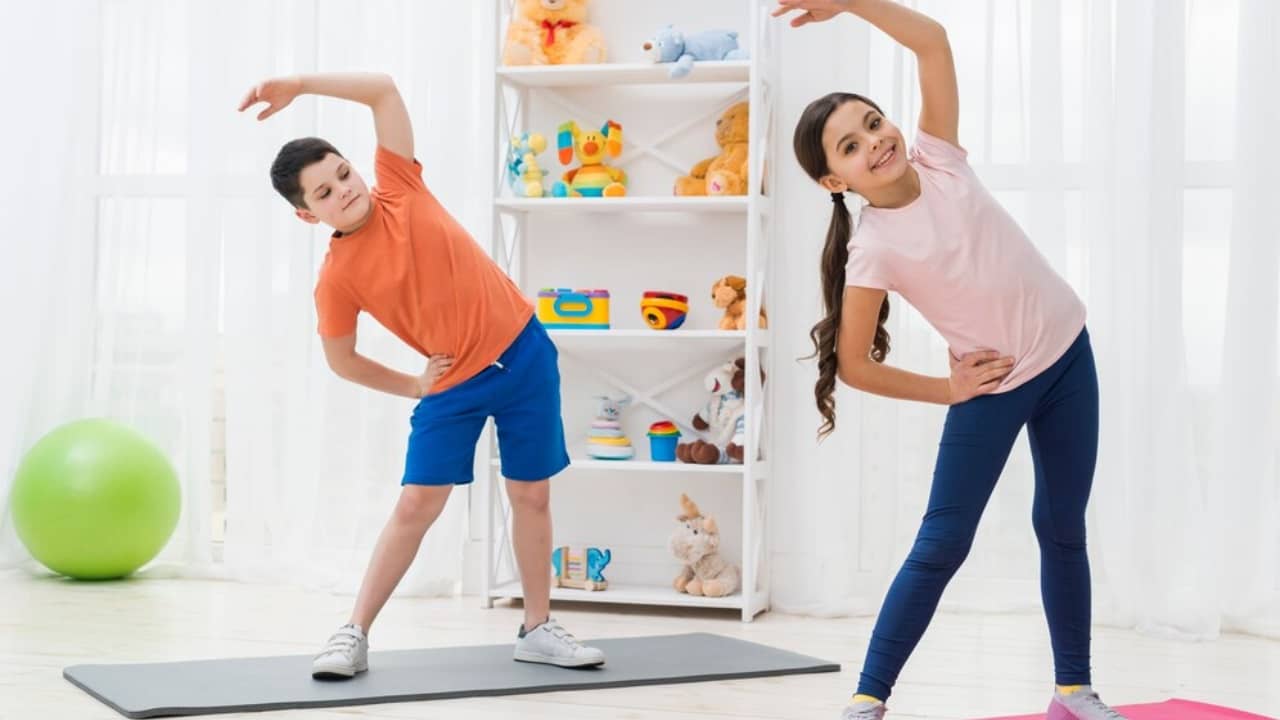Reducing hyperactivity in autism involves implementing strategies that promote calmness, self-regulation, and sensory modulation. It’s important to recognize that each individual with autism is unique, so what works well for one person may not be as effective for another. Here are some general strategies that can help reduce hyperactivity in individuals with autism:
1. Sensory Support:
– Provide a sensory-friendly environment with appropriate lighting, comfortable seating, and minimal distractions.
– Offer sensory tools such as fidget toys, weighted blankets, or sensory swings to help regulate sensory input and promote relaxation.
2. Physical Activity:
– Incorporate regular physical activity or exercise into the daily routine, as it can help release excess energy and improve overall mood and behavior.
– Offer structured activities like yoga, swimming, or sports that promote body awareness and relaxation.
3. Visual Supports:
– Use visual schedules, timers, and countdowns to help individuals with autism understand transitions and manage expectations for upcoming activities.
– Provide visual cues for tasks or activities to enhance clarity and reduce anxiety.
4. Structured Routines:
– Establish predictable routines and schedules to provide a sense of stability and security. Consistency in daily activities can help reduce hyperactivity and increase self-regulation.
– Break tasks or activities into smaller, manageable steps to prevent overwhelm and frustration.
5. Mindfulness and Relaxation Techniques:
– Teach relaxation techniques such as deep breathing, progressive muscle relaxation, or guided imagery to promote calmness and reduce stress.
– Encourage mindfulness practices that focus on being present in the moment and increasing self-awareness.
6. Social and Emotional Support:
– Provide opportunities for social interaction and peer engagement in structured and supportive settings.
– Teach social-emotional skills such as recognizing emotions, coping strategies, and problem-solving techniques to improve self-regulation and emotional well-being.
7. Nutrition and Sleep:
– Ensure a balanced diet with nutritious meals and snacks to support overall health and energy levels.
– Establish consistent sleep routines and promote good sleep hygiene practices to enhance restful sleep and reduce hyperactivity during the day.
8. Positive Reinforcement and Rewards:
– Use positive reinforcement strategies such as praise, rewards, or token systems to reinforce desired behaviors and encourage self-regulation.
– Focus on strengths and accomplishments to boost self-esteem and motivation.
It’s essential to collaborate with caregivers, educators, therapists, and healthcare professionals to develop individualized strategies that address specific needs and preferences. Tailoring interventions based on the individual’s interests, sensory profile, communication style, and developmental level can lead to more effective outcomes in reducing hyperactivity and promoting overall well-being.
1. Sensory Support
Sensory support plays a significant role in reducing hyperactivity in autism by helping individuals regulate their sensory experiences and promoting a calmer, more focused state. Here are specific sensory support strategies that can be effective:

- Provide Sensory-Friendly Environments:
– Create environments with controlled sensory input, such as dim lighting, soft background music, and comfortable seating to reduce sensory overload.
– Minimize clutter and visual distractions to create a calm and organized space.
- Offer Sensory Tools:
– Provide sensory tools that individuals can use to regulate their sensory input, such as fidget toys, stress balls, or textured objects.
– Weighted blankets or vests can provide deep pressure input, promoting a sense of calmness and reducing hyperactivity.
- Use Visual Supports:
– Use visual schedules or visual timers to help individuals understand transitions and manage their time effectively. This can reduce anxiety and prevent sensory-related meltdowns.
– Visual cues, such as picture symbols or written instructions, can support individuals in following routines and completing tasks independently.
- Implement Sensory Breaks:
– Schedule regular sensory breaks throughout the day to allow individuals to engage in sensory activities that promote relaxation and self-regulation.
– Sensory breaks may include activities like deep breathing exercises, stretching, swinging, or using sensory equipment like a sensory room or calming corner.
- Offer Choice and Control:
– Involve individuals in selecting sensory tools or activities that work best for them. Providing choice and control empowers them to self-regulate and manage their sensory needs effectively.
– Allow opportunities for sensory exploration and experimentation in a safe and supportive environment.
- Promote Sensory Integration Activities:
– Engage individuals in sensory integration activities that provide a variety of sensory input, such as brushing techniques, tactile play with different textures, or proprioceptive activities like heavy work or jumping.
– Sensory integration therapy provided by an occupational therapist can also be beneficial in addressing sensory processing challenges and reducing hyperactivity.
- Encourage Movement and Physical Activity:
– Incorporate movement breaks and physical activities into the daily routine to release excess energy and promote relaxation. Activities like yoga, dance, or outdoor play can help regulate sensory input and improve focus.
– Use sensory-friendly equipment like therapy balls, trampolines, or balance boards to provide sensory input during physical activities.
- Monitor and Adjust Sensory Strategies:
– Observe and monitor individual responses to sensory strategies to determine their effectiveness. Adjust and modify strategies based on the individual’s preferences and sensory needs.
– Collaborate with caregivers, educators, and therapists to develop a holistic sensory support plan that addresses specific sensory challenges and promotes overall well-being.
By incorporating these sensory support strategies into daily routines and environments, individuals with autism can better regulate their sensory experiences, reduce hyperactivity, and enhance their ability to engage in meaningful activities and interactions.
2. Physical Activity
Physical activity can be a powerful tool in reducing hyperactivity and promoting overall well-being in individuals with autism. Here are some ways physical activity can be utilized effectively:

- Structured Exercise Programs: Engage individuals in structured exercise programs tailored to their interests and abilities. Activities like swimming, biking, yoga, or martial arts can help release excess energy, improve focus, and promote relaxation.
- Outdoor Play: Encourage outdoor play and exploration in natural environments. Activities such as running, climbing, playing in a playground, or exploring nature trails can provide sensory input, enhance motor skills, and reduce hyperactivity.
- Sensory Integration Activities: Incorporate sensory integration activities into physical play. Activities like jumping on a trampoline, using therapy balls, swinging, or engaging in obstacle courses can provide proprioceptive and vestibular input, promoting self-regulation and calming effects.
- Team Sports and Group Activities: Encourage participation in team sports or group activities that promote social interaction, cooperation, and physical fitness. Sports like soccer, basketball, or dance classes can provide opportunities for social engagement while encouraging physical activity.
- Yoga and Mindfulness Practices: Introduce yoga, mindfulness, and relaxation techniques tailored for individuals with autism. Yoga poses, deep breathing exercises, and guided relaxation activities can help reduce stress, improve body awareness, and promote self-regulation.
- Use of Sensory Equipment: Utilize sensory-friendly equipment during physical activities. Equipment such as therapy swings, balance boards, sensory balls, or tactile mats can provide additional sensory input and support sensory processing during exercise.
- Adapted Physical Education: Work with educators and therapists to develop adapted physical education programs that meet the individual needs and abilities of individuals with autism. Adaptations may include modified equipment, visual supports, and structured routines to enhance participation and success.
- Consistent Schedule: Incorporate physical activity into the daily routine with a consistent schedule. Establishing regular times for physical activity can help individuals anticipate and prepare for movement breaks, reducing hyperactivity and promoting overall well-being.
- Monitor Progress and Adjustments: Monitor the individual’s response to physical activity interventions and make adjustments as needed. Pay attention to changes in mood, behavior, and energy levels to determine the effectiveness of different activities and routines.
By incorporating a variety of physical activities tailored to the individual’s preferences and needs, it’s possible to reduce hyperactivity, improve self-regulation, enhance physical fitness, and promote overall health and well-being in individuals with autism. Collaborating with caregivers, educators, therapists, and fitness professionals can help create a comprehensive and supportive physical activity plan.
3. Visual Supports
Visual supports can be incredibly effective in reducing hyperactivity in individuals with autism by providing structure, clarity, and predictability. Here are some ways visual supports can be used:

- Visual Schedules: Create visual schedules that outline daily routines, activities, and transitions. Use pictures, symbols, or written words to help individuals understand what to expect throughout the day. This reduces anxiety, increases predictability, and promotes smoother transitions between activities.
- Task Boards: Use task boards or checklists with visual cues to break down tasks into manageable steps. This helps individuals stay organized, focused, and motivated to complete tasks without feeling overwhelmed or scattered.
- Countdown Timers: Use visual countdown timers or timers with visual cues to indicate the remaining time for activities or transitions. This helps individuals prepare mentally for upcoming changes and reduces resistance or anxiety related to transitions.
- Visual Choice Boards: Offer visual choice boards with options for activities, rewards, or breaks. Allowing individuals to make choices visually empowers them, promotes independence, and reduces frustration or resistance.
- First-Then Boards: Use first-then boards to sequence activities or tasks. For example, show a preferred activity (e.g., playing with a toy) first, followed by a less preferred activity (e.g., completing a task). This motivates individuals to complete tasks in order to access preferred activities.
- Visual Rules and Expectations: Create visual rules and expectations posters or charts that outline behavioral expectations in different settings (e.g., classroom, home). Use simple visuals and clear language to reinforce positive behaviors and reduce hyperactivity.
- Visual Cues for Transitions: Use visual cues such as transition cards, countdown clocks, or visual timers to signal upcoming transitions. This helps individuals prepare for changes and facilitates smoother transitions between activities or locations.
- Visual Relaxation Techniques: Provide visual supports for relaxation techniques such as deep breathing exercises, progressive muscle relaxation, or guided imagery. Use visual guides or cue cards to help individuals practice these techniques independently to reduce hyperactivity and promote calmness.
- Visual Calming Strategies: Create a visual menu of calming strategies and tools that individuals can use when feeling overwhelmed or hyperactive. Include options such as sensory tools, calming activities, or quiet spaces to support self-regulation.
- Visual Feedback Systems: Implement visual feedback systems such as token boards or behavior charts to track and reinforce positive behaviors. Use visual cues to indicate progress, rewards, or consequences, promoting self-monitoring and self-regulation.
By incorporating visual supports tailored to the individual’s needs and preferences, it’s possible to create a structured and supportive environment that reduces hyperactivity, enhances self-regulation, and promotes success in daily activities. Collaborating with educators, caregivers, therapists, and individuals with autism can help identify effective visual supports and implement strategies that meet specific needs.
3. Structured Routines
Structured routines are highly beneficial for individuals with autism, including those with hyperactivity, as they provide predictability, consistency, and a sense of security. Here are some key elements and strategies for implementing structured routines effectively:

- Consistent Schedule: Establish a consistent daily schedule with regular times for waking up, meals, activities, learning sessions, breaks, and bedtime. Consistency helps individuals with autism anticipate what will happen next and reduces anxiety related to unexpected changes.
- Visual Schedules: Use visual schedules with pictures, symbols, or written words to outline the daily routine step by step. Visual schedules help individuals understand and follow the sequence of activities, transitions, and expectations throughout the day.
- Clear Expectations: Communicate clear expectations for each activity or task within the routine. Use visual cues, verbal prompts, or social stories to explain what is expected, how to complete tasks, and what comes next.
- Break Tasks into Manageable Steps: Break down tasks or activities into smaller, manageable steps with visual cues or checklists. This helps individuals focus on one step at a time, reduces overwhelm, and promotes task completion.
- Use First-Then Boards: Utilize first-then boards to sequence activities or tasks. Show a preferred activity (e.g., playing with a toy) first, followed by a less preferred activity (e.g., completing a task). This motivates individuals to complete tasks in order to access preferred activities.
- Transition Strategies: Use transition strategies such as visual timers, countdowns, or transition cards to signal upcoming transitions between activities. Provide warnings and prepare individuals in advance to help them transition smoothly and reduce resistance.
- Provide Choices: Offer choices within the structured routine to promote autonomy and engagement. Use visual choice boards or options for activities, materials, or rewards to allow individuals to make decisions and feel empowered.
- Include Sensory Breaks: Incorporate sensory breaks or activities within the routine to provide opportunities for self-regulation and sensory modulation. Use sensory tools, movement activities, or quiet spaces to support individuals in managing sensory needs.
- Consistent Reinforcement: Use consistent reinforcement strategies to reinforce positive behaviors, task completion, and adherence to the routine. Use visual feedback systems such as token boards or behavior charts to track progress and provide reinforcement.
- Flexibility Within Structure: While maintaining a structured routine is important, allow for flexibility and adaptations as needed. Be responsive to individual needs, preferences, and changes in circumstances while maintaining the overall structure and predictability of the routine.
By implementing structured routines with visual supports, clear expectations, and supportive strategies, individuals with autism, including those with hyperactivity, can benefit from increased predictability, reduced anxiety, improved focus, and enhanced self-regulation. Collaborate with caregivers, educators, therapists, and individuals with autism to create and implement routines that meet specific needs and promote success in daily activities.
4. Mindfulness and Relaxation Techniques
Mindfulness and relaxation techniques can be highly beneficial for individuals with autism, including those with hyperactivity, as they promote self-awareness, emotional regulation, and stress reduction. Here are some mindfulness and relaxation techniques that can be helpful:

- Deep Breathing Exercises: Teach deep breathing techniques to promote relaxation and reduce anxiety. Encourage individuals to take slow, deep breaths, inhaling through the nose and exhaling through the mouth. Use visual cues or guided imagery to support deep breathing exercises.
- Progressive Muscle Relaxation (PMR): Guide individuals through progressive muscle relaxation exercises, where they tense and then relax different muscle groups sequentially. This technique helps release tension, promote body awareness, and induce a state of calmness.
- Guided Imagery: Use guided imagery scripts or recordings to lead individuals through relaxing visualizations. Encourage them to imagine peaceful scenes, such as a calming beach or serene forest, and focus on sensory details to enhance relaxation.
- Mindful Movement: Incorporate mindful movement activities such as yoga, tai chi, or qigong into the daily routine. These practices promote body awareness, flexibility, and mindfulness while encouraging relaxation and stress reduction.
- Body Scan Meditation: Guide individuals through a body scan meditation, where they focus their attention on different parts of the body from head to toe, noticing sensations without judgment. This mindfulness practice promotes relaxation, reduces tension, and increases self-awareness.
- Mindfulness of Breath: Practice mindfulness of breath by focusing attention on the natural rhythm of breathing. Encourage individuals to observe the sensations of breathing without trying to change or control it, fostering present-moment awareness and relaxation.
- Sensory-Based Relaxation: Utilize sensory-based relaxation techniques, such as listening to calming music or nature sounds, using aromatherapy with calming scents like lavender, or engaging in tactile activities like squeezing a stress ball or using textured objects for sensory stimulation.
- Mindful Eating: Encourage mindful eating practices by focusing on sensory experiences during meals, such as observing colors, textures, tastes, and smells of food. Encourage individuals to eat slowly, savoring each bite mindfully.
- Grounding Techniques: Teach grounding techniques, such as 5-4-3-2-1 sensory grounding, where individuals focus on their senses to connect with the present moment and reduce anxiety. This technique involves identifying and describing five things they see, four things they feel, three things they hear, two things they smell, and one thing they taste.
- Daily Mindfulness Practice: Encourage individuals to practice mindfulness and relaxation techniques daily, incorporating them into a structured routine. Consistent practice can lead to long-term benefits in promoting relaxation, emotional regulation, and overall well-being.
It’s important to tailor mindfulness and relaxation techniques to meet individual preferences, sensory needs, and developmental abilities. Provide clear instructions, use visual supports or cues as needed, and create a supportive environment for practicing these techniques. Collaborate with caregivers, educators, therapists, and individuals with autism to integrate mindfulness and relaxation practices into daily routines and promote positive outcomes in managing hyperactivity and enhancing well-being.
5. Social and Emptional Support

Social and emotional support is crucial for individuals with autism, including those with hyperactivity, as it helps foster meaningful connections, emotional regulation, self-awareness, and overall well-being. Here are key components and strategies for providing social and emotional support:
- Empathy and Understanding: Foster empathy and understanding by educating caregivers, educators, peers, and family members about autism spectrum disorder (ASD) and the unique strengths and challenges individuals may experience. Encourage empathy, acceptance, and inclusion in social interactions.
- Social Skills Training: Provide social skills training and interventions tailored to the individual’s needs and abilities. Focus on areas such as initiating and maintaining conversations, understanding social cues, perspective-taking, empathy, and building friendships.
- Peer Support and Social Groups: Facilitate opportunities for peer support and social interaction in structured and supportive environments. Encourage participation in social groups, clubs, or activities based on shared interests and strengths.
- Visual Supports for Social Understanding: Use visual supports, social stories, or comic strip conversations to teach social concepts, rules, and expectations. Visual supports can help individuals with autism understand social situations, navigate social cues, and learn appropriate social behaviors.
- Emotional Regulation Strategies: Teach individuals with autism strategies for emotional regulation, such as deep breathing exercises, mindfulness techniques, self-calming strategies, and identifying and expressing emotions using visual supports or emotion cards.
- Positive Reinforcement and Encouragement: Use positive reinforcement, praise, and encouragement to reinforce positive social behaviors, efforts, and accomplishments. Provide specific feedback and recognition for progress and successes in social interactions.
- Role-Playing and Modeling: Use role-playing and modeling techniques to practice social skills and problem-solving scenarios. Role-playing allows individuals to rehearse social situations, learn appropriate responses, and gain confidence in social interactions.
- Peer Mentoring and Buddy Systems: Implement peer mentoring programs or buddy systems where individuals with autism can receive support, guidance, and friendship from neurotypical peers. Peer mentors can help model social skills, promote inclusion, and foster positive relationships.
- Counseling and Therapy: Offer individual or group counseling sessions, behavioral therapy, or cognitive-behavioral interventions to address social and emotional challenges. Therapy sessions can focus on developing coping strategies, improving self-esteem, managing anxiety, and enhancing social skills.
- Family and Caregiver Support: Provide support and resources for families and caregivers of individuals with autism. Offer training, workshops, and guidance on creating supportive environments, promoting communication, understanding sensory needs, and accessing community resources.
- Encourage Self-Advocacy: Encourage self-advocacy skills by teaching individuals with autism to communicate their needs, preferences, and feelings effectively. Support self-expression, self-determination, and empowerment in social and emotional contexts.
By implementing these social and emotional support strategies, individuals with autism, including those with hyperactivity, can benefit from increased social competence, emotional regulation, self-confidence, and overall well-being. Collaborate with caregivers, educators, therapists, and peers to create a supportive and inclusive environment that promotes positive social interactions and emotional well-being for individuals with autism.
6. Nutrition and Sleep
Nutrition and sleep play crucial roles in supporting the overall health, well-being, and behavior of individuals with autism, including those with hyperactivity. Here are some key considerations and strategies for promoting healthy nutrition and quality sleep:

- Balanced Diet: Encourage a balanced and nutritious diet that includes a variety of foods from all food groups. Emphasize whole grains, fruits, vegetables, lean proteins, and healthy fats to provide essential nutrients and support overall health.
- Individualized Meal Plans: Consider individual preferences, sensory sensitivities, and dietary restrictions when planning meals. Offer choices and alternatives to accommodate individual needs and promote enjoyment of meals.
- Regular Meal Times: Establish regular meal times and a consistent meal schedule to promote healthy eating habits and regulate appetite. Avoid skipping meals and encourage balanced snacks between meals as needed.
- Hydration: Ensure adequate hydration by encouraging individuals to drink water throughout the day. Limit sugary beverages and caffeinated drinks, especially close to bedtime, to promote hydration and overall health.
- Sensory-Friendly Eating Environment: Create a sensory-friendly eating environment by minimizing distractions, providing comfortable seating, using appropriate utensils and tableware, and offering preferred textures and flavors.
- Mealtime Routines: Establish structured mealtime routines with visual supports or schedules to help individuals with autism understand meal expectations, transitions, and sequence of activities.
- Sleep Hygiene Practices: Promote good sleep hygiene practices to support quality sleep. Encourage consistent sleep schedules, bedtime routines, and relaxing activities before bedtime to signal the body that it’s time to wind down.
- Limit Screen Time: Minimize screen time, especially close to bedtime, to reduce exposure to stimulating activities and promote relaxation before sleep. Create screen-free zones in bedrooms to establish a sleep-friendly environment.
- Create a Calm Bedtime Routine: Develop a calming bedtime routine that includes activities such as reading a book, listening to calming music, taking a warm bath, or practicing relaxation techniques like deep breathing.
- Mindful Eating and Sleep Habits: Encourage mindful eating practices by promoting awareness of hunger cues, mindful chewing, and savoring food flavors. Similarly, promote mindfulness and relaxation techniques to help individuals unwind and prepare for restful sleep.
- Consultation with Healthcare Professionals: Consult with healthcare professionals, such as pediatricians, nutritionists, or sleep specialists, for personalized guidance and recommendations based on individual needs, medical history, and developmental considerations.
- Monitor and Evaluate: Monitor nutritional intake, eating behaviors, sleep patterns, and overall well-being regularly. Keep track of any changes or concerns and seek professional guidance as needed to address nutritional or sleep-related issues.
By prioritizing healthy nutrition and quality sleep, individuals with autism, including those with hyperactivity, can experience improved physical health, cognitive functioning, behavior regulation, and overall quality of life. Collaborate with caregivers, educators, healthcare professionals, and individuals with autism to create supportive environments and implement strategies that promote optimal nutrition and sleep habits.
7. Positive Reinforcement and Rewards
Positive reinforcement and rewards are effective strategies for promoting desired behaviors, encouraging motivation, and reinforcing positive experiences in individuals with autism, including those with hyperactivity. Here are some key principles and strategies for using positive reinforcement and rewards effectively:

- Identify Target Behaviors: Clearly define the target behaviors or goals that you want to encourage or reinforce. These behaviors should be specific, measurable, achievable, relevant, and time-bound (SMART).
- Understand Individual Preferences: Consider individual preferences, interests, and motivators when selecting reinforcers and rewards. What motivates one person may not be as motivating for another, so it’s important to personalize reinforcement strategies.
- Use Positive Language: Use positive and encouraging language when providing feedback and reinforcement. Focus on praising and reinforcing efforts, progress, and improvements rather than solely on outcomes or achievements.
- Select Reinforcers and Rewards: Choose reinforcers and rewards that are meaningful, desirable, and age-appropriate. Reinforcers can include tangible rewards (e.g., toys, stickers, tokens), social rewards (e.g., praise, high-fives, verbal acknowledgment), or activity rewards (e.g., preferred activities, special privileges).
- Implement Reinforcement Schedule: Determine the reinforcement schedule based on the individual’s needs and the target behavior. You can use continuous reinforcement (reinforcing every instance of the target behavior) initially to establish the behavior, then transition to intermittent reinforcement (reinforcing occasionally) to maintain the behavior.
- Timing of Reinforcement: Deliver reinforcement immediately following the desired behavior to strengthen the association between the behavior and the reward. Prompt, consistent, and contingent reinforcement enhances the effectiveness of positive reinforcement.
- Visual Reinforcement Systems: Use visual reinforcement systems such as token boards, behavior charts, or reward charts to track progress, reinforce positive behaviors, and provide visual feedback. Visual supports help individuals with autism understand expectations and stay motivated.
- Pair Reinforcement with Praise: Pair tangible rewards with verbal praise or social reinforcement to reinforce positive behaviors effectively. Verbal praise should be specific, genuine, and descriptive to highlight the behavior being reinforced.
- Gradual Fading of Reinforcement: Gradually fade the use of tangible rewards over time as the individual becomes more proficient in the desired behavior. Shift the focus to intrinsic motivators, natural consequences, or social reinforcement to maintain behavior.
- Consistency and Predictability: Be consistent and predictable in delivering reinforcement and rewards. Ensure that expectations, rules, and reinforcement strategies are clear and consistently applied across different environments and contexts.
- Monitor Progress and Adjustments: Monitor progress, track data, and evaluate the effectiveness of reinforcement strategies. Make adjustments as needed based on feedback, changes in behavior, and individual responses to reinforcement.
- Celebrate Achievements: Celebrate achievements, milestones, and successes to acknowledge efforts and reinforce positive experiences. Celebrations can include special events, recognition ceremonies, or social acknowledgments.
By implementing positive reinforcement and rewards effectively, individuals with autism can experience increased motivation, improved behavior, enhanced self-esteem, and a positive learning environment. Collaborate with caregivers, educators, therapists, and individuals with autism to develop and implement personalized reinforcement strategies that support positive outcomes and promote overall well-being.


